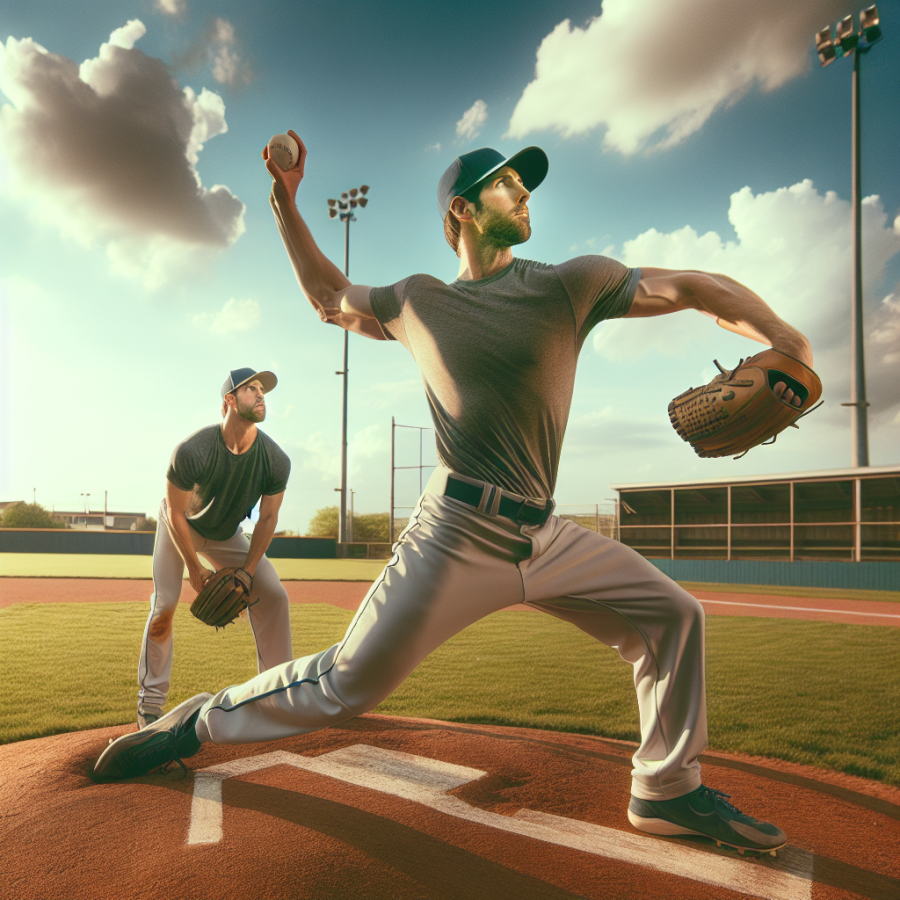Conditioning and Training: Building the Foundation for a Lightning-Fast Arm
Professional baseball pitchers and other athletes seek an edge over their competition and often, that edge lies in a deceptively simple concept: a lightning-fast arm. The foundation for throwing blistering fast pitches doesn't start on the mound; it begins with a robust conditioning and training regiment that melds strength with technique.
Conditioning is the bedrock upon which the arm's speed is built. To achieve peak performance, it is necessary to embark on a comprehensive strength and conditioning program that not only emphasizes the arm but also the entire body. A well-rounded program enhances overall athleticism, with a particular emphasis on the muscles that contribute to throwing motions. Core strength is crucial for pitchers because it provides the stability and balance necessary for a powerful throw.
Resistance training plays a significant role in developing a lightning-fast arm. Focusing on exercises that build shoulder strength—such as rotator cuff exercises—is vital, but must be balanced with full-body strength routines. Exercises like deadlifts, squats, and overhead presses lay the foundation for explosive power that can translate to pitching velocity.
In addition to strength, flexibility and mobility cannot be overlooked. The ability to move joints freely through their full range of motion leads to a more efficient and explosive pitching motion. Dynamic stretching, yoga, and mobility drills should be integral components of a pitcher's training program.
Furthermore, the training shouldn't be confined to conventional weight training and flexibility exercises alone. Plyometric training can contribute to improved arm speed by enhancing the muscles' ability to exert force rapidly. Through activities such as medicine ball throws and plyo push-ups, athletes can develop the explosive strength necessary for quick arm action.
However, all of these components should complement the skill-specific work necessary for pitchers. This includes mechanics drills that reinforce proper pitching technique, which is as essential to increasing pitch speed as physical strength and conditioning. By refining technique, pitchers ensure that their body works together in a seamless and efficient manner, channeling physical power into each pitch effectively.
To build the endurance needed for long stints on the mound, cardiovascular fitness is also imperative. Stamina training may include distance running, high-intensity interval training (HIIT), or sprint workouts to boost overall endurance and recovery times between pitches and games.
Nutrition and rest are the final, yet often overlooked, elements in building a lightning-fast arm. Providing the body with the right fuel for recovery and ensuring adequate sleep to facilitate muscle repair are critical for maintaining high performance over a long season.
Read also:
A Comprehensive Analysis of American Football: History, Strategies, and Impact
Fine-Tuning Your Mechanics for Peak Pitching Speed
Within the pursuit of maximizing velocity in your pitching, one critical area cannot be overlooked: fine-tuning your mechanics. This goes beyond simple practice; it requires a deep understanding of the intricacies of your body's motion and how each segment contributes to the overall speed of your pitch.
Firstly, focus on your grip. Holding the ball too tightly can actually slow down your pitch, as it creates tension in your arm. Work on finding a grip that is firm enough to control the ball, but relaxed enough to allow for a quick release.
Creating a consistent and powerful leg drive remains at the foundation of your pitching mechanics. The force generated from your legs propels your entire body forward, converting it into velocity as your arm comes over the top. Pay special attention to your back leg. It should be driving forcefully towards the plate, not simply collapsing or falling towards the side.
Hip-to-shoulder separation is also a vital component. The timing and coordination of your hips rotating just before your shoulders can create a whip-like effect, adding significant speed to your pitch. This separation is what allows for the upper body to deliver the ball with maximum force while capitalizing on the momentum built from the ground up.
Arm action is not to be underestimated either. A well-coordinated arm action that is both "long enough" to create leverage and "short enough" to remain quick and powerful can be quite challenging to master. Not to mention, maintaining a consistent arm slot is essential. Any variation can not only change the pitch's path but also affect the amount of force you can generate.
Your front side mechanics also play a role in pitching speed. The front leg should act as a strong brace upon foot strike, allowing your upper body to catapult over and drive the ball towards the catcher. A weak front side can dissipate energy and decrease velocity.
Lastly, your follow-through is the final piece of the puzzle. A complete and controlled follow-through can help ensure that all the energy and power you've generated is fully expressed as the ball releases from your hand. Additionally, it aids in avoiding injuries by reducing undue stress on the arm.
In conclusion, while you continue to unleash your maximum velocity by harnessing these secrets to a faster pitch, remember that each element of your pitching mechanics is interconnected. Fine-tuning these aspects of your pitching motion is not just about throwing harder; it's about making each phase of your delivery more efficient and effective.




